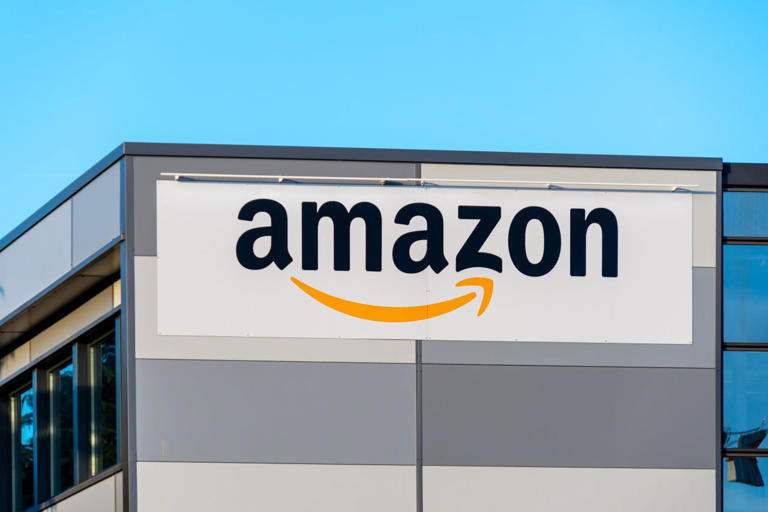Amazon joins the 2 trillion club, or launches discount zones against Temu and Shein
On Wednesday (June 26th), Amazon's stock price rose 3.9% to close at $193.61, with a total market value exceeding $2 trillion for the first time.

Join the 2 trillion club
On Wednesday (June 26th), Amazon's stock price rose 3.9% to close at $193.61, with a total market value exceeding $2 trillion for the first time.
After experiencing a difficult year in 2022, Amazon's stock price rose by over 80% last year. As of Wednesday's close, Amazon's stock price has risen by nearly 30% this year and over 50% in the past 12 months. In contrast, the S&P 500 index has risen nearly 15% this year.
Now, Amazon, along with Apple, Microsoft, Nvidia, and Google's parent company Alphabet, has become one of the few companies with a market value exceeding $2 trillion.
Currently, Microsoft is the company with the highest market value, with a market value of $3.36 trillion. Apple followed closely behind with a market value of $3.27 trillion. Chip giant Nvidia ranks third with a market value of $3.04 trillion. Alphabet ranks fourth with a market value of $2.28 trillion, while Amazon ranks fifth.
Earlier on Wednesday, Bank of America analyst Justin Post raised Amazon's stock target price from $210 to $220. This means that there is still about 14% room for Amazon's stock price to rise.
Justin Post believes that Amazon can continue to improve the efficiency of its retail business. Bank of America has rated Amazon as the top choice among large technology companies in 2024.
Amazon's first quarter financial report released in April this year exceeded market expectations, with revenue of $143.3 billion, a year-on-year increase of 13%, and earnings per share of $0.98. Amazon's two major profit driven businesses, Amazon Web Services (AWS) and advertising, achieved year-on-year revenue growth of 17% and 24%, respectively.
Bank of America estimates that Amazon may ship over 9 billion packages worldwide this year. This will make its logistics business the largest shipper in the United States.
Justin Post mentioned in his report that the retail industry is the main driving force behind the recent revision of AWS estimates, and due to higher than expected efficiency in the first quarter, Amazon is expected to further increase its retail profit margin leverage in 2024.
However, even though Amazon's efficiency has significantly improved in 2023, all five logistics utilization indicators tracked by Bank of America (including units per square foot) are still below the level of 2018. This indicates that the company still has the potential to further improve efficiency.
Bank of America believes that Amazon is taking multiple measures to further improve retail efficiency. These measures include strengthening the distribution of inventory networks, increasing the share of goods from new daily delivery stations, and expanding the integration of robots in distribution centers.
The report added that Wall Street's forecast for Amazon's retail profit margin is still relatively conservative. And it is stated that improving efficiency will further increase Amazon's retail profits on the current basis, thereby contributing to an increase in Amazon's stock price.
or launch a discount area on their website
It is reported that according to a seller introduction provided by Amazon, the company is planning to launch a new section on its website, specifically offering low-priced fashion and daily necessities, most of which are priced under $20.
It is understood that Amazon will also allow Chinese sellers to directly ship products to American consumers, with Amazon's goal of delivering products to shoppers within 9 to 11 days. In the past, Amazon sellers in China relied on Amazon logistics to transport their products to warehouses in the United States and then send them to customers from the warehouses. This arrangement can help Amazon sellers in China save costs.
Amazon also stated that Chinese merchants can test new products through small-scale production. This is somewhat similar to the "on-demand manufacturing" model adopted by Shein. On demand manufacturing refers to the production of a limited quantity of goods by a manufacturer, and the production of more goods as demand increases.
In response to this news, Amazon spokesperson Maria Boschetti said, "We have been exploring new ways of collaborating with sales partners to please our customers with more choices, lower prices, and greater convenience."
Amazon's move is believed to be in response to competition from Temu, a subsidiary of Pinduoduo, and online fashion retailer Shein. Temu and Shein are both known for selling low-priced products. Against the backdrop of high prices, these two companies have taken away a considerable share of e-commerce from Amazon by offering good quality and affordable prices, which has put great pressure on Amazon.
For many years, Chinese merchants have been a large group in the Amazon market, but as competition intensifies, the company is making renewed efforts to attract Chinese sellers. Last December, Amazon announced the establishment of a new "innovation center" in Shenzhen and significantly reduced the fees charged to merchants selling clothing priced below $20.

·Original
Disclaimer: The views in this article are from the original Creator and do not represent the views or position of Hawk Insight. The content of the article is for reference, communication and learning only, and does not constitute investment advice. If it involves copyright issues, please contact us for deletion.